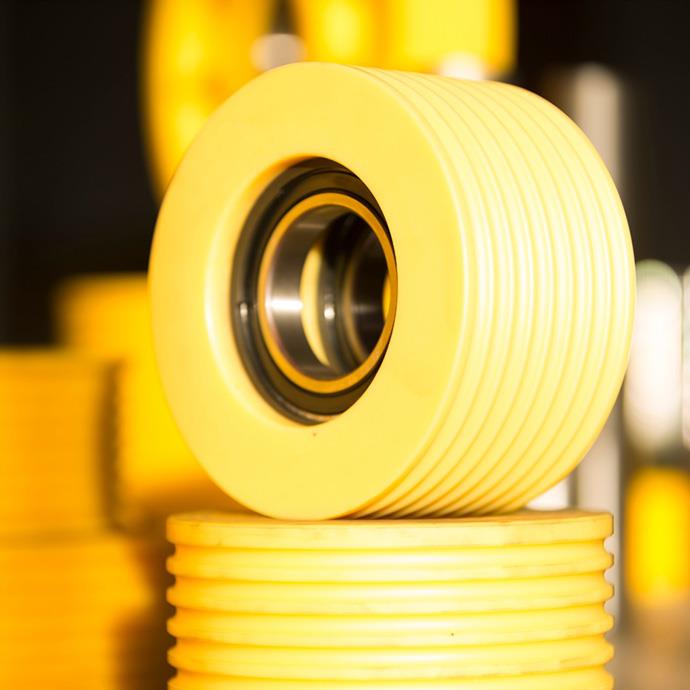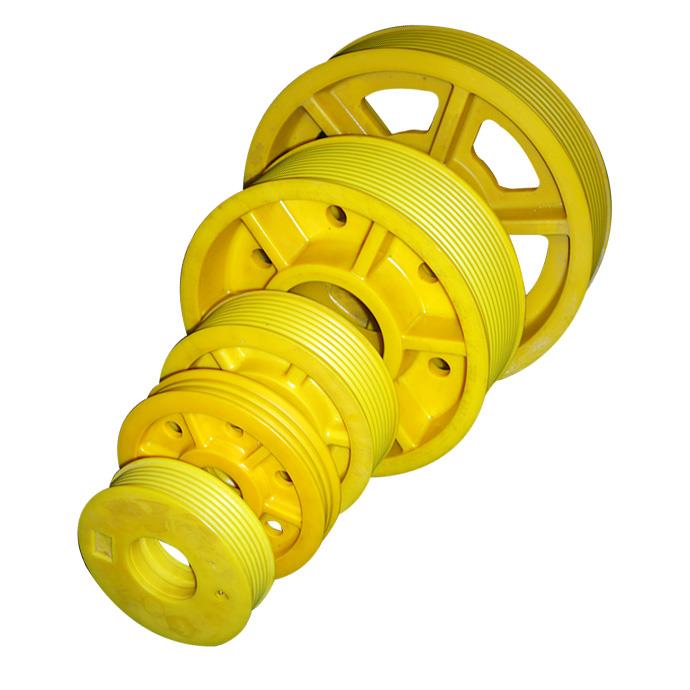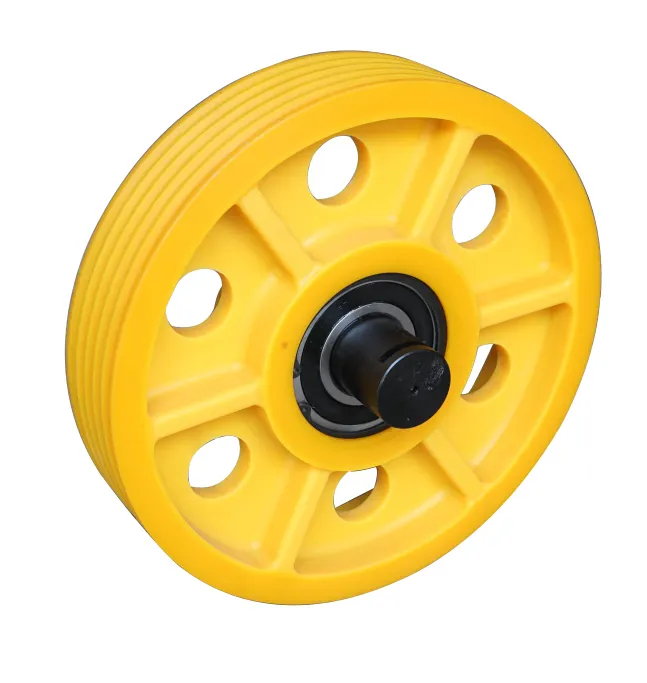Product Description
Strong Strength Crane Lifting Hook Pulley for Sale
ZheJiang CHINAMFG Heavy Industry Machinery Co., Ltd. is mainly engaged in the design, manufacture,installation and maintenance of single girder overhead cranes(LD Models), Double Girder Overhead Cranes (LH,QD etc),gantry cranes(MH,MDG..),Jib cranes(BZ,QZ,MZ etc), frequency inverter cranes, Explosion-proof series cranes(LB,QB etc), Cranes with grab bucket, Low headroom Hoist, Electric Winches, Construction Cranes, Clean Room Cranes and CD1 MD1 HC Electric Hoist, Hand Chain Hoist ETC…
We are a member of China Lifting Industry Association, safety-recognized enterprise, national crane machinery designated production organizations, we have obtained mechanical engineering “design certificate”, and the national issued crane “manufacturing permit”,installation and maintenance, renovation and maintenance of the “License” and so on.
In the past 10 years, we are aiming at China domestic market and become a leading manufacturer in China. Also, with the help of China trading companies we have exported our products to many countries such as Vietnam, Philippines, Sri Lanka, Bangladesh, France, Dubai, Kazakhstan, Russia, Tanzania ,Peru , Newzealand,etc countries . We got 99% good feedback from the overseas customers.
Now we are not only aiming at China domestic market growth ,but also to expand the international market with our quality and price advantages. Send us an inquiry now.
The company has 6 functional departments, including R&D department, sales department, materials supply department, production department, QC department,after-sales department. There are 16 workshops including electrical, riveting, forging, assembly, heat treatment, machining and maintenance.
Our company produces various lifting equipment and loading and unloading. The equipment is 30,000 tons and the sales income is 360 million yuan. 18 offices and 76 sales and service agencies in power plants, industrial and mining enterprises, and port terminals.
We offer all kinds of mechanial parts and electric parts for overhead cranes, jib cranes, gantry cranes etc, welcome to contact us for a quotation of the crane parts, customized parts accpeted for your special requirements.
Safety Devices for overhead bridge crane:
To guarantee the normal operation of crane and avoid the personal casualty and mechanical damage, the safety device we
provide are not only the electric protective devices or alarm CHINAMFG but also other
equipments as following:
1.Overload Limit Switch
2. Rubber Buffers
3.Electric Protective Devices
4.Emergency Stop System
5.Voltage Lower Protection Function
6. Current Overload Protection System
7. Rail Anchoring
8.Lifting Height Limit Device
Advantages of a single girder design:
1)Less expensive due to a simpler trolley design, reduced freight costs, simplified and faster installation, and less material for the
bridge and runway beams.
2)Most economical option for light to medium-duty cranes
3)Lower loads on the building structure or foundations due to a reduced deadweight. In many cases, it can be supported by existing
roof structure without the use of additional support columns.
4)Better hook approach for both trolley travel and bridge travel
5)Easier to install, service, and maintain
6)Ideal for workshops, warehouses, material yards, and manufacturing and production facilities
7)Lighter load on runway rails or beams means less wear on the beams and end truck wheels over time
8)Great for facilities with low headroom
FAQ ABOUT MINGD CRANES:
1.Can the cranes be customized?
Yes,every customer’s working condition is different, all of our products can be customized depend on customers’ requirements.
Please give us the information as clear as you can, so we can give our best design to suit for your demands.
2.How many operation methods for my selections?
We provide pendent controller with push button control type, remote control type or cabin control type.Please tell us what kind
of operation way you need.
3.I have low headroom in my workshop, is it possible to install a crane in it?
We have special products for low headroom workshop, our engineer can give the best design according to your dimensions.
4.Do you supply lift tools?
Yes, we can provide any kind of lifting tools such as hook, electromagnetic, grab bucket etc…
5.In order to offer the most suitable design solution for you, it will be great helpful if you can offer us the following information to us:
1. Lifting capacity.
2. Span length.(rail center to rail center)
3. Lifting height.(hook center to ground)
4. Have you installed the rails? Do you need us to supply the rails? How long is it?
5. Power supply: Voltage.
6. Working condition: what kind of material to lift? temperature?
7. It would be much better if it is possible for you to offer the drawing photo of your workshop.
Certificates:
Customized Design &Production Accepted According to Your Using
Situation, Please Contact Us for Further Communication:
Tel: 13953895525
Website: mdcrane
| Certification: | GS, CE, ISO9001 |
|---|---|
| Condition: | New |
| Operation Form: | Remote Control |
| Maximum Lifting Height: | 6m, 9m, 12m, 18m, 24m, 30m |
| Maximum Lifting Weight: | 0.5ton-32ton |
| Main Girder Form: | Single Girder |
| Customization: |
Available
| Customized Request |
|---|
How does the quality and precision of lifting pulleys impact the accuracy of lifting operations?
The quality and precision of lifting pulleys have a direct impact on the accuracy of lifting operations. The design, construction, and performance of pulleys influence the control, stability, and reliability of the lifting process. Here’s a detailed explanation of how the quality and precision of lifting pulleys impact lifting operations:
1. Load Control: High-quality lifting pulleys are designed to provide precise and smooth load control. They enable operators to accurately adjust the speed, direction, and position of the load during lifting operations. Pulleys with precise load control capabilities ensure that the load is lifted, lowered, or moved with accuracy and minimal deviation, resulting in precise positioning and placement of the load.
2. Stability and Balance: Precision-engineered lifting pulleys contribute to the stability and balance of the lifting system. They are designed to minimize vibrations, wobbling, or oscillations during the lifting process. This stability ensures that the load remains balanced and steady, reducing the risk of accidents, load shift, or damage to the lifting equipment. The quality of pulleys directly affects the system’s ability to maintain stability and balance throughout the lifting operation.
3. Efficiency and Smooth Operation: High-quality lifting pulleys are engineered to minimize friction and resistance, allowing for efficient and smooth operation. They are often equipped with low-friction mechanisms, such as ball bearings, to reduce energy loss and enable smooth rotation. Pulleys that operate smoothly require less force to lift the load, leading to improved energy efficiency and precise control over the lifting operation.
4. Reduced Jerks and Sudden Movements: Lifting pulleys that exhibit high precision and quality help prevent sudden jerks or uncontrolled movements during lifting. They ensure that the load is lifted or lowered smoothly without abrupt starts or stops. This reduces the risk of shock loads, equipment damage, and potential injury to workers. By minimizing jerks and sudden movements, precise pulleys contribute to the overall safety and accuracy of lifting operations.
5. Load Distribution: Quality lifting pulleys distribute the weight of the load evenly across the lifting system. They enable the load to be spread over multiple ropes or cables, ensuring a well-balanced distribution of forces. This even load distribution minimizes stress on individual components, enhances the system’s stability, and improves the accuracy of load handling and positioning.
6. Minimal Deflection and Stretching: High-quality lifting pulleys are designed to minimize deflection and stretching of the ropes or cables during lifting operations. They ensure that the cables remain aligned and experience minimal elongation or deformation. This reduces the risk of inaccurate load positioning caused by sagging or stretching of the lifting elements, ensuring precise and consistent lifting performance.
7. Reliability and Longevity: The quality of lifting pulleys directly impacts their reliability and longevity. Well-designed pulleys constructed with durable materials and precise manufacturing techniques are more likely to withstand heavy loads, frequent use, and harsh operating conditions. Reliable pulleys contribute to the accuracy of lifting operations by minimizing the chances of unexpected failures or malfunctions that can compromise the precision and safety of the lifting process.
8. Compatibility and
What are some real-world examples of lifting pulley applications in construction projects?
Lifting pulleys are widely used in construction projects for various lifting applications. They enhance the efficiency and safety of lifting heavy loads, equipment, and materials. Here are some real-world examples of lifting pulley applications in construction:
1. Tower Crane Lifting: Tower cranes are commonly employed in construction projects to lift and move heavy materials and equipment vertically and horizontally. These cranes utilize lifting pulleys in their lifting mechanisms. The pulleys distribute the load’s weight, provide mechanical advantage, and enable precise control over the lifting process.
2. Mobile Crane Operations: Mobile cranes, such as truck-mounted or rough-terrain cranes, are versatile lifting equipment used in construction sites. Lifting pulleys are integral components of these cranes, specifically in their boom systems. The pulleys help lift heavy loads and position them accurately, facilitating efficient construction operations.
3. Elevator Installation: In construction projects involving multi-story buildings, elevators are essential for vertical transportation. Lifting pulleys are crucial components in elevator systems. They enable smooth and controlled movement of the elevator car, ensuring safe transportation of passengers or goods between floors.
4. Concrete Pumping: Concrete pumps are used to transport and pour concrete in construction projects. These pumps employ lifting pulleys to lift and position heavy concrete-filled hoses or booms. The pulleys facilitate precise pouring and placement of concrete, allowing for efficient construction processes.
5. Roofing Material Installation: Lifting pulleys are commonly used in construction projects for the installation of roofing materials. They assist in lifting heavy roofing materials, such as shingles or metal panels, to elevated locations. The pulleys help distribute the load’s weight and make it easier for workers to handle and position the roofing materials accurately.
6. Facade Installation: Lifting pulleys play a crucial role in the installation of building facades. They are used to lift and position large panels, glass sheets, or curtain wall components to the desired heights. The pulleys enable controlled movement and precise placement of the facade elements during installation.
7. Bridge Construction: Lifting pulleys are extensively utilized in bridge construction projects. They assist in lifting and positioning heavy bridge components, such as segments, beams, or precast elements. The pulleys distribute the load’s weight and enable precise control over the lifting process, ensuring safe and efficient bridge construction.
These are just a few examples of how lifting pulleys are applied in construction projects. Lifting pulleys offer versatility and adaptability, allowing them to be customized and integrated into various construction lifting systems. By incorporating lifting pulleys, construction projects can benefit from improved lifting capabilities, enhanced efficiency, and safer operations.
What role do lifting pulleys play in supporting and guiding lifting cables or ropes?
Lifting pulleys play a crucial role in supporting and guiding lifting cables or ropes during lifting operations. They serve several important functions that contribute to the safe and efficient movement of loads. Here are the key roles that lifting pulleys play:
1. Load Support: Lifting pulleys provide a stable and secure platform for supporting the weight of the load. The load is typically attached to the lifting cable or rope, which passes through the pulley. The pulley’s design, construction, and load-bearing capacity ensure that it can safely support the weight of the load without deformation or failure.
2. Force Distribution: Lifting pulleys distribute the force applied to the lifting cable or rope evenly across the pulley wheel. As the cable or rope passes over the pulley, the load’s weight is distributed over a larger area, reducing stress and preventing excessive wear on the cable or rope. This force distribution helps to maintain the integrity and longevity of the lifting medium.
3. Friction Reduction: Lifting pulleys are designed to reduce friction between the lifting cable or rope and the pulley wheel. They often feature smooth surfaces, rounded grooves, or ball bearings that minimize the contact area and frictional forces. By reducing friction, the pulleys enable smoother movement of the lifting medium, reducing wear on the cable or rope and facilitating more efficient lifting.
4. Directional Guidance: Lifting pulleys guide the lifting cable or rope along a specific path, ensuring that it stays aligned and properly positioned during the lifting process. The pulleys prevent the cable or rope from twisting, tangling, or deviating from the intended path, which could compromise the safety and effectiveness of the lifting operation.
5. Tension Control: Lifting pulleys assist in controlling the tension in the lifting cable or rope. By adjusting the position and angle of the pulley, operators can regulate the tension applied to the lifting medium. This control over tension is crucial for maintaining stability, preventing slippage, and ensuring safe and controlled lifting of the load.
6. Force Amplification: Lifting pulleys amplify the force applied to the lifting cable or rope. By using multiple sheaves or wheels, the pulleys increase the mechanical advantage, allowing operators to lift heavier loads with reduced effort. This force amplification is particularly beneficial when dealing with heavy loads that would require excessive force to lift without the mechanical advantage provided by the pulleys.
Overall, lifting pulleys play a vital role in supporting and guiding lifting cables or ropes. They provide load support, distribute forces evenly, reduce friction, guide the lifting medium along the desired path, assist in tension control, and amplify the applied force. These functions contribute to the safe, controlled, and efficient movement of loads during lifting operations.
editor by CX
2023-10-10




